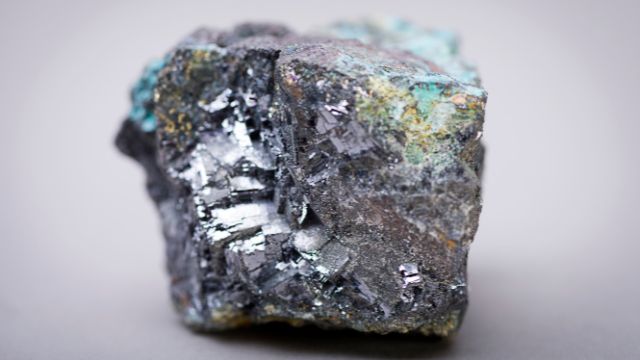Do you know what is the powder metallurgy and it’s uses? Well it is use for various purpose and it has many advantages and disadvantages and today we are sharing everything about it either it’s Advantages and Disadvantages of Powder Metallurgy or it’s uses this article contains everything which you should know about the Powder Metallurgy.
What is powder metallurgy?
Powder metallurgy is an important part of the metal industry used to create metal parts and other components using the powdered form of the metals, hence the name powder metallurgy. It has been extensively used in the industry these days to create various objects and has become an indispensable part of it.
Use of Metallurgy Powder
The use of powder metallurgy allows for the creation of improved and complex materials along with efficient dimensions making it an important part of industries like aerospace, automobile, electronics, and more. It’s paramount how much it’s important for these industries but there are certain caveats too which need to be considered with the use of powder metallurgy.
We here will look into both sides of the coin with our take on the advantages and disadvantages of powder metallurgy. Let’s check it out.

Advantages of Powder Metallurgy
1. Reduction in waste materials
Heavy-scale manufacturing process often creates an abnormal loss of materials that can’t be solved. The firms or the companies treat it as an abnormal loss in their financial statements. But there are ways where this abnormal loss can be reduced and the use of powder metallurgy allows for it. The use of powder metallurgy is an environment-friendly process that helps reduce waste and allows for efficient production. This also utilizes the leftover metal powder in the next batch which makes the loss very minimal. The use of powder metallurgy has reduced the costs and waste reduction for many industries.
2. Efficient Production
The use of previous traditional techniques used to create a tedious manufacturing process and often was rigid. The absence of the ability to alter the final product in terms of size or design was much of an issue. But these things have been solved with the use of powder metallurgy. It allows for the ability to change or alter the final product as per the requirement and also can pump out highly efficient products which traditional ways can’t do.
3. Ability to develop precise and complex parts
We talked about how powder metallurgy allows for a better value for production and the ability to alter the outcome of the product as per the need. It also allows for the development of precise and complex parts that old machinery and processes can’t comprehend. Since powder particles can be controlled and also be molded and pressed accordingly as per the design requirements it helps to make complex parts of gears and levers with ease.
4. Ability to furnish ready-made finish products
Other ways of processing require the product to be dealt with through finishing like polishing, coating, and net shaping which takes an additional batch of work and adds to the cost and time required for the manufacturing. Powder metallurgy is easy to run as it furnishes ready-made final-level products without the need for additional finish reducing the time and cost for the manufacturer and also delivering efficiency in production. Though certain parts may require an additional touch of finishing, the majority of the products come in a ready-made finish look reducing the time for additional processing.
5. Automation ability
Previous generation technology and processes had a limitation in terms of not being able to be programmed to automate. This can be solved with the use of powder metallurgy as it allows for automation starting from the very beginning blending to the end compaction process. That reduces the need for intervention and the entire batch can be processed and manufactured within one automation cycle. This also creates an efficient manufacturing process with the right product dimension delivered every time. The automation also allows for the ability for temperature control and additional quality control for better production.
Disadvantages of Powder Metallurgy
1. Limited in nature at times
This may be contrary to how powder metallurgy can be limited when we talk about how expansive it is. But the issue with it is that it can be limited at times. Not all products can be manufactured via the use of powder metallurgy as some parts require the use of metals and not metal powder to build. Similarly, certain large parts can’t be produced with metal powders as they can be fluid while the design requires compact pieces.
2. Highly cost-ineffective for smaller manufacturers
For manufacturers who do not operate on a global scale or large scale, setting up a powder metallurgy-based production setup can be highly cost-ineffective as it requires a large capital outlay to begin with. This can dent the capital investment of the manufacturers and not be able to deliver the right profit or production levels to mitigate those costs. Smaller manufacturers may have to take a hit in the profits which is bad for their business perspective.
3. Varying density of the products
Since powder metallurgy uses metal powder for production that is blended, processed, and compressed to deliver a compact final product, it doesn’t always suit all types of needs. For say, parts that are prone to high attrition and damage cannot efficiently function with a powder-based product as the required density will not be there. This is why achieving the right density at all times with powder metallurgy makes it hard for all types of parts to be manufactured. Hence a lot of manufacturers use a mix of traditional and powder metallurgy technology to resolve their production line issues.
Final Words
Powder metallurgy ever since its inception has been of great use to manufacturers due to its wide array of usability and ability to ease the operational tedious tasks. But there are certain areas where powder metallurgy remains to solve the need. As such, as a manufacturer, it is advised to go through your manufacturing process, pick the needs, and opt for the processing that will benefit your business.

